|
Poor hedge! I think I must start this post by explaining why a gardener would pay someone to take care of a small patch of lawn and a small hedge. Well, I wouldn’t. But Joseph would. When we moved to this property from our acreage, he got rid of almost all of his lawn equipment. Not only did we not have much space in the garage – he has a (wood) workshop – it costs little to pay someone to take care of the more mundane gardening tasks. The lawn maintenance guys deal with the edging, hedge maintenance, mowing, and, of course, clean-up. It takes the current three-person crew 15 minutes or less most days, a little longer when tending to the shrubs. The last crew chose to ignore that part of the deal. The hedge, I mean. We didn’t realize it at first, but one day we were looking at a hedge that was at least two feet higher than it should be according to HOA standards. We basically had ligustrum walls. Most of the hedge wasn't particularly healthy, either. We asked the guys to take care of it. They never did. Hence, new guys. We like the new crew. But by the time they trimmed the hedge – a pretty impressive undertaking – it was early winter. Within a few weeks of the severe trimming, the Houston area had one of our weird and unexpected hard freezes. For the first time ever, ALL the ligustrum leaves dropped. At the beginning of March, they were still mostly bare – mostly being important here. A few were undeniably dead. So we talked with our lawn service boss. We walked the small perimeter together. He recommended that we first replace only the dead ones. “See?” He pointed to a few buds towards the bottom. “Green.” And so we agreed. I’m glad that we did. Oddly, a few leaves began popping up along the lower half of the hedge, towards the bottoms of the shrubs. Not only up from the ground, but from the trunks. The top half seemed dead. I don’t really understand this, but I’m not complaining. The lawn crew pruned, cutting off another foot or two. You know how it sometimes seems that plants leaf or bud out overnight? It wasn’t the case this time. Slowly, painstakingly, leaves returned. The hedge is still fighting the good fight. But I think it might come through! Yesss! It’s funny. As a general rule, I prefer native plantings. Ligustrum shrubs are not native to Texas. They’re native to Europe, where they are called privet. But these shrubs had been here for around twenty years, and they’re not aggressive plants. It seemed a shame to me that they would die on our watch. We kind of like the renewed, short hedge. There’s less privacy, but it’s so much more open than before. Being on the golf course, the hedge is supposed to be no higher than the low fence, anyway. That’s fine by us.
More soon! Happy Gardening!
0 Comments
Justicia brandegeeana, also known as Red Shrimp Plant and Mexican Shrimp Plant, is a member of the Acanthaceae family. Native to Mexico and Central America, it has made itself at home along the Gulf Coast. It's a sprawling, tropical plant that dies to the ground in cold winters, but dependably pops back up in the spring. With the right conditions, it can be a bit aggressive. It grows large and suckers, but I know from experience that it can be effectively pulled or dug up.
It usually starts blooming by midsummer, but this year, in our garden, it didn't really get going until October. I can't say that I mind. Better late than never! The flowers are cute and often very much resemble shrimp, hence the common name. It comes in other colors, a popular and common option being yellow. There's a fairly new cultivar from Florida that I'd like to get my hands on. It's called Shrimp Fruit Cocktail and is sort of yellow-green (chartreuse) and pink. But I digress... In short, I like all the varieties, but the red looks really nice this time of year. If you have hot summers, mild winters, and enough water for your garden, I recommend planting Shrimp Plant where it has room to spread out. Hummingbirds love it, and it draws butterflies and bees as well. It will do you proud. Meet Salvia leucantha, garden superstar, also known as Velvet Sage and Mexican Bush Sage. Drought-tolerant and pest-free, it’s been named a Texas Superstar by Texas A&M AgriLife Research and Extension, who put the plants through the ringer before recommending them as such. Trust me, if a plant makes it to Texas Superstar status, it can grow almost anywhere for at least a few months. In our area…I daresay in most areas of Texas, Salvia leucantha grows very well indeed. For my own purposes, I have created a category of plants that I have a complicated relationship with – “giant plants”. It’s in that category and one of the plants I was hesitant to plant in our small garden when we first moved to this property. But I can’t help but love this giant. It can be a little obnoxious at times, but it’s never failed me. It blooms spectacularly every September, continuing until the first hard freeze. It did so even after the deep freeze that killed so many plants a couple of years ago. Why do I love it? Aside from it being gorgeous, you mean? It draws pollinators by the score. Bees and hummingbirds can’t get enough of it. And it smells so good! It doesn’t have a distinct fragrance like pineapple or culinary sage, but rather holds the deep, fresh, green scent of the salvia genus in general. I love the scent; it’s one of my favorites in the garden. It may or may not die to the ground in winter (depending on your weather and area), but it comes back in spring. So, that’s the glory. The pain? It’s size and robustness can be a challenge. Sometimes, it seems to have doubled overnight, crowding the plant(s) next to it. I’d like to say that that’s an exaggeration. I’m not really sure it is, though. 😉 Along our hedge, it’s planted next to a tough, antique rose. Marie Van Houtte is not usually a small shrub, and I admit that I've seen larger specimans. But it looks positively puny next to this sage. Throughout the blooming season, I have to regularly cut back the salvia's growth. To be clear, Mexican Bush Sage isn’t an aggressive plant. It wouldn’t be a Superstar if it was. It’s just big and happy. Even though it’s drought tolerant, in our garden it gets watered with the rest of the plants. That’s not overly much, but it doesn’t need a lot of encouragement to grow rampantly. Eventually, it has to be divided which, given its size and root ball, isn’t the easiest garden chore. On the upside, the divisions transplant well, settling easily into new spots around the garden, and are easy to share. There’s some old garden wisdom about being cautious when it comes to free plants, that they might overtake your garden. Salvia leucantha isn’t one of those. If someone offers it to you from their garden, accept it without reservation. You’ll be glad that you did. I began this past weekend Friday, changing my plans in order to stay home and work in the garden. The hedge was getting out of hand.
It all started with one of our shared fence boundaries. In your opinion, whose responsibility is it if grass is growing through a wrought iron fence? The neighbor who the grass belongs to or the neighbor whose bed is being overrun? Well, once it's in my beds, I count it my concern. But if I don't see it -- and I don't because I have a row of flowering plants fronting our hedge -- then it doesn't concern me overmuch. But it doesn't look so good from the other side of the fence. So, well, their grass, our hedge. But despite the normal, little aggravations of suburban life, we do have excellent neighbors, and the weather was good. Did I need more encouragement to play outdoors? Nope, not a bit! I worked in the garden most of Friday, and Joseph and I spent several hours more out there Saturday. It was great! Bees and butterflies abounded, squirrels were making the oddest sounds, and the hummers have returned! Pretty soon, it will be time to add some fall color out there. I can hardly wait! Hamelia patens, commonly known as Firebush, Texas Firebush, and Hummingbird bush, is a wonderful addition to the garden. In our area, it usually dies to the ground at the first or second hard freeze and is one of the first to pop back up in spring. However, after the historic deep freeze of 2021, it did not return that year, nor did it show up this past spring, 2022. There wasn't a single shoot that we could see. But I didn't replace it. I just couldn't accept that it had succumbed. You can imagine how glad I was when, late this past June, I saw signs of life. Yes! It needed some time, but it's every bit as tough as I've always believed it to be.
We've grown them for years. In our last garden -- the big one -- we had a few of them. It was one of the "giant plants" that I decided I just didn't have room for in our new, small garden. But I missed it and felt as though I was cheating the hummingbirds. Of course, I ended up planting one. Hummers absolutely love it. Bees and butterflies like it, too. This is a heat-loving plant and drought-tolerant. But with regular watering and in our heat, Firebush easily grows as tall as me (5'2"), sometimes even taller. This one hasn't grown to its original proportions yet, but there's still time. It will probably bloom at least until Christmas. When it beds down for its fairly short winter nap, I may or may not front its spot with pretty little annuals. And I will hope that it returns stronger than ever come spring. :) Happy Gardening! Lately -- during these very hot days -- there's been even more activity than usual in the hedge. I love it! At dusk, it's always full of birds. But it was a nice surprise to see this little sparrow taking a break on the branch of a loquat tree one stifling afternoon. And it made me realize that I need to share more photos of the wild in our little garden. The hedge is very important to the birds.
Hope your week is going well and your garden, thriving. :) Asclepias curassavica, Tropical Butterfly Weed -- woe is me. So...when we first left our acreage and moved onto this teeny, tiny lot, I was more than a little disheartened. I couldn't abandon gardening altogether (anymore than I could stop writing), but I didn't try as hard. When I saw this butterfly weed at one of my favorite nurseries, I didn't stop to think, "Native? Non-native?" I assumed that since that particular nursery was selling it and I'd had it in my previous garden (having purchased it from the same nursery), it was native. Not. I recently learned that it's not! I can't even find a definitive answer to where exactly it originated, so we'll just go with "the tropics". It's not a complete disaster. I only have it at the very end of our western hedge because it can get weedy and seems to be under control there. It's a host plant for monarch butterflies and is popular with other pollinators. Hummingbirds even seem to like it. It does well in hot climates. In areas of mild winters, like southeast Texas, it does too well. That's the problem. Its flowers encourage monarchs to remain in the area beyond migration time. They usually won't survive the winter. Furthermore, the plant tends to harbor the parasite Ophryocytis elektroscirrha (OE), whose primary host is the monarch butterfly. When it fails to die back in winter, concentrations of OE increase to dangerous levels for the butterflies. Doom? Ugh! According to various, trusted sources (that I've been chasing frantically), it's not all bad. Houston Audobon The National Wildlife Federation It is a host plant for monarchs. It's just not as safe as native milkweeds are. I can either pull it completely or controlling the problem by pruning it down to the ground twice a year. I've been doing that, anyway, because I knew about OE even without realizing or recalling that the plant isn't native. And since native milkweed is hard to find in nurseries, I ordered some seeds today. I love seeing butterflies in our garden -- the more, the merrier. If the native milkweed takes off, I'll probably pull the rest. Until then, I'll control it. Decision made. In the northern hemisphere, it's hot in August. It is what it is. It might be one of my least favorite months in the garden, but make no mistake. I'm very grateful for both the time and the garden. The above photo is of one side of our short, eastern hedge. Facing west, it's in full sun most of the day. You can imagine that in 100 degree weather with high humidity, it takes special plants indeed to not only survive but thrive. One of those plants is Butterfly Bush, also known as Butterfly Clerodendrum. Native to eastern Africa, its botanical name seems to be rapidly evolving. It's gone from Clerodendrum ugandense to Clerodendrum myricoides 'Ugandense' to Rotheca myricoides in a little over 100 years. Since there are other plants called "Butterfly Bush", I prefer the common name "Butterfly Clerodendrum. But both are fitting names. Not only does it attract pollinators such as bees and butterflies, the flowers look like small, adorable butterflies. Isn't that sweet? Our Butterfly Clerodendrum is taller than me - probably about 7' high and 3' wide. I must say, it's the tallest one I've ever seen. I'm used to seeing them around four or five feet tall. It would be wider if it had room and shorter if I'd gotten around to pruning it sooner. I'm not going to do anything drastic right now, though. It's just too hot. While all of the eastern hedge is persevering, it does not need the challenge of extra stress.
Tough as it is, Butterfly Clerodendrum does have a few simple requirements. While it's fine with full sun, it does better with a little shade, especially in summer. It's not completely drought tolerant, but only requires average watering. And while it prefers a loamy soil, it is willing to negotiate. It will bloom until the first frost. In a very mild winter, it might remain evergreen, but it usually dies to the ground and pops back up in spring. From past experience, I have reason to expect our plant to be covered in small, butterfly-like blooms this autumn. You should get one. :) Happy Gardening! I absolutely love our Sweet Bay tree -- Laurus nobilis. A member of the Lauraceae family and native to the Mediterranean, it has been widely adapted, it has been used as a culinary herb for over a millenium. Here in southeast Texas, it gets big. We planted this one almost eight years ago, when we first moved to this property. It was a baby, about a foot tall, and we've cut it in half twice because of the power lines overhead. My husband has tried to shape it several times, too. Personally, I don't mind its shrubby-ness as I can harvest the leaves more easily.
It fronts our northern or golf course hedge. It might seem pretentious to name the areas of our small garden, but I don't care (which surely indicates pretention is not part of the plan). It's easier for me to refer to the different areas, whatever the size, and personalizes the space. We love the aromatic leaves in the garden. We also enjoy them in soups, gumbos, with roasts, and for tea. I brewed a lovely tea with sweet bay and rosemary leaves just yesterday. It smelled and tasted so good. But that's for an herbal chat, not a hedge one. For a pest-free plant that grows quickly, is undemanding, and tolerates most any type of pruning, Laurus nobilis is hard to beat. I'm pleased to have it along my mini-hedgerow. I am a flower of Sharon,
a lily of the valleys. -- Song of Solomon 2:1 I'm so surprised. All this time, I've thought that Althea, Hibiscus syriacus, is native to Texas. Why I would think that, I freely admit, is something of a mystery. Then I thought, given its Latin name, that it is must be of Levantine origin. To further confirm that idea -- no presumption this time -- it's called "Rose of Sharon", as in the Plain of Sharon in Israel. But nope! Current opinion is that it originated in China. Wherever it came from, it's a well-loved plant around the world. It's even the national plant of Korea. It's certainly popular here in Texas. A member of the mallow family, it can grow very large; but it's not an aggressive plant. Not only are the beautiful blooms appreciated by gardeners; butterflies and hummingbirds like them, too. I don't know what particular variety mine is. I really must start keeping better notes. But it's double-petaled, seems pest-free, and is about six-feet tall at the moment. It's been blooming away since the beginning of June. It's the first Althea I've ever grown. I wish I had room for more. |
Our GardenFor years, my husband and I worked at creating a series of gardens on our four-acre lot in a rural, Texas subdivision west of Houston. I have to say, it was a fantastic experience. Now, I have a pocket garden on a golf course. Archives
June 2024
Categories
All
NewsletterFrom me to you with a smile. Thank you!You have successfully joined our subscriber list. |
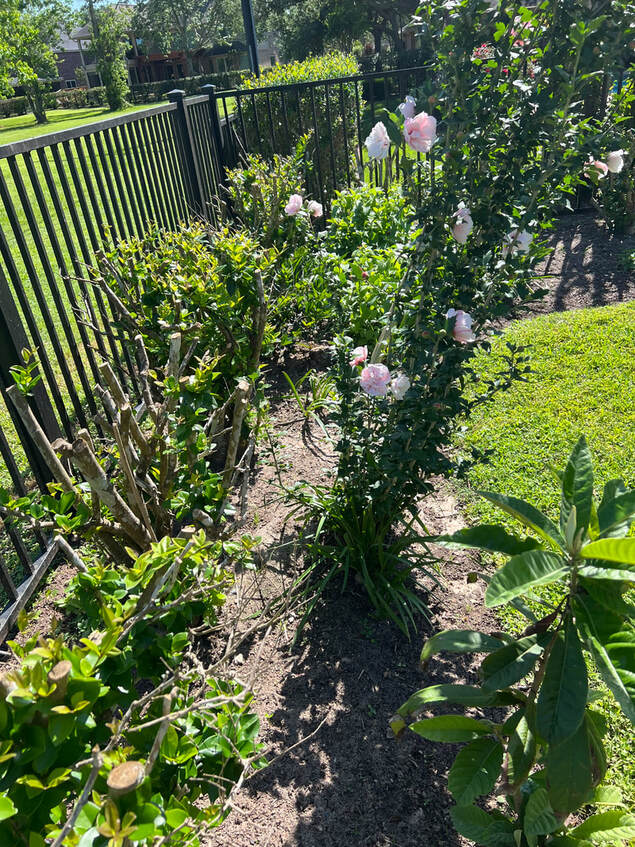
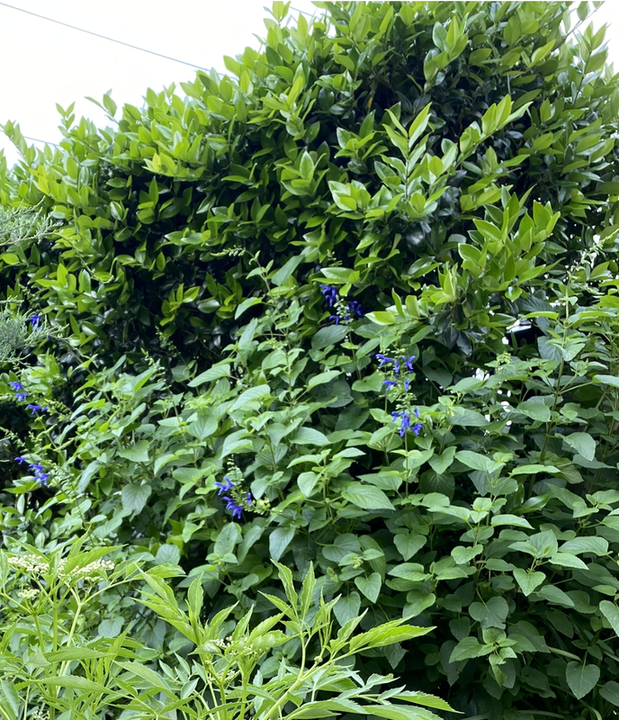
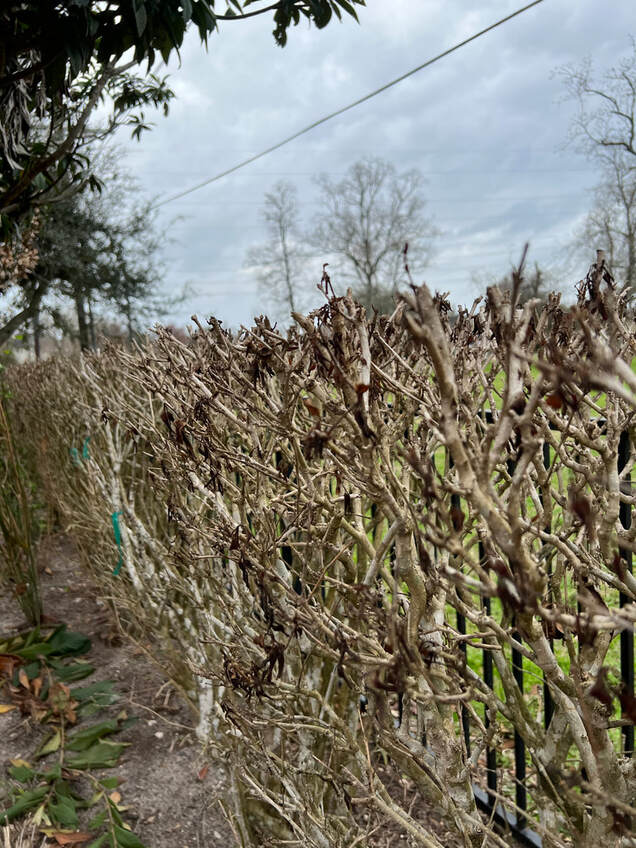
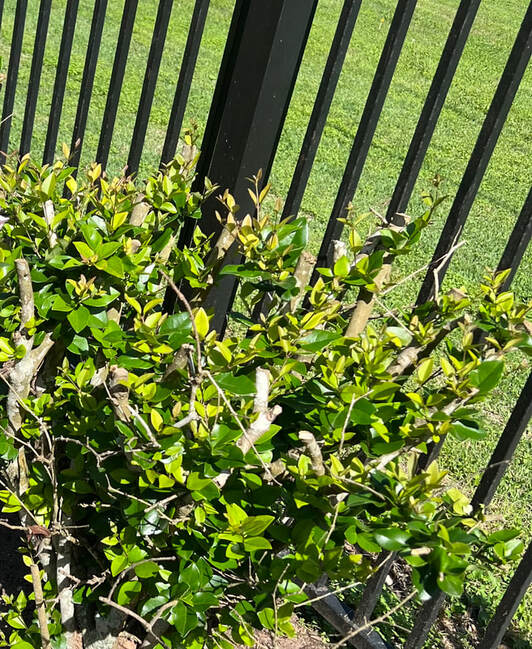
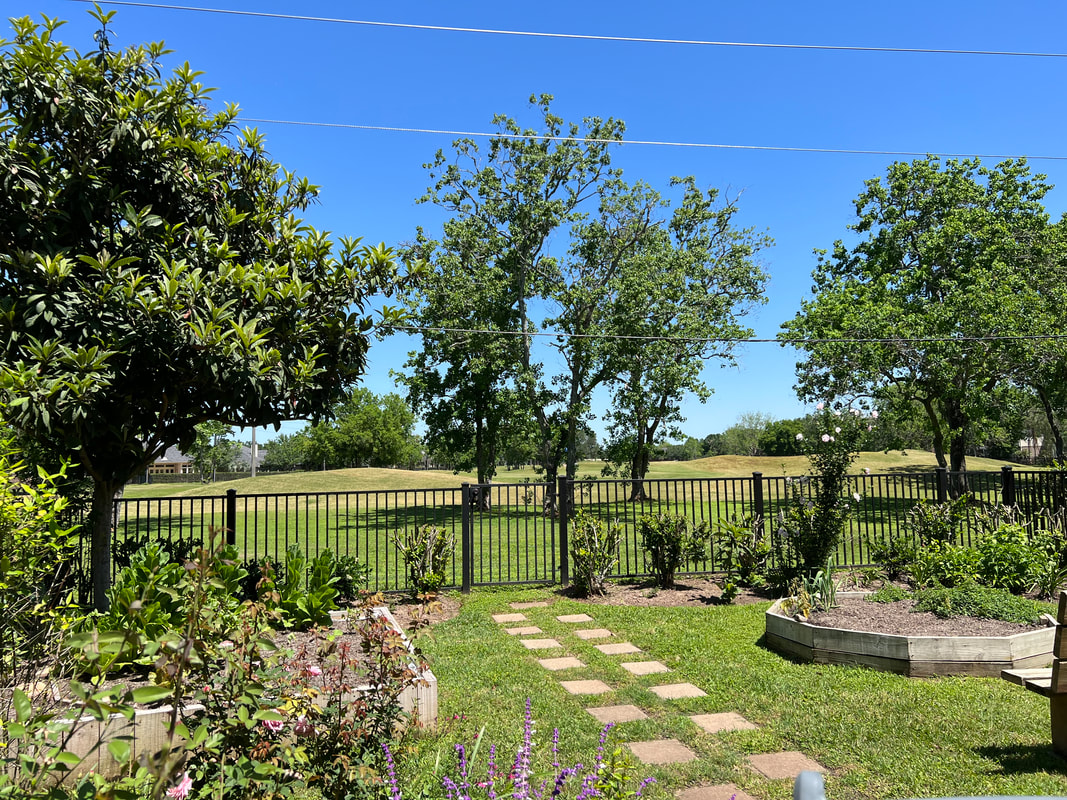
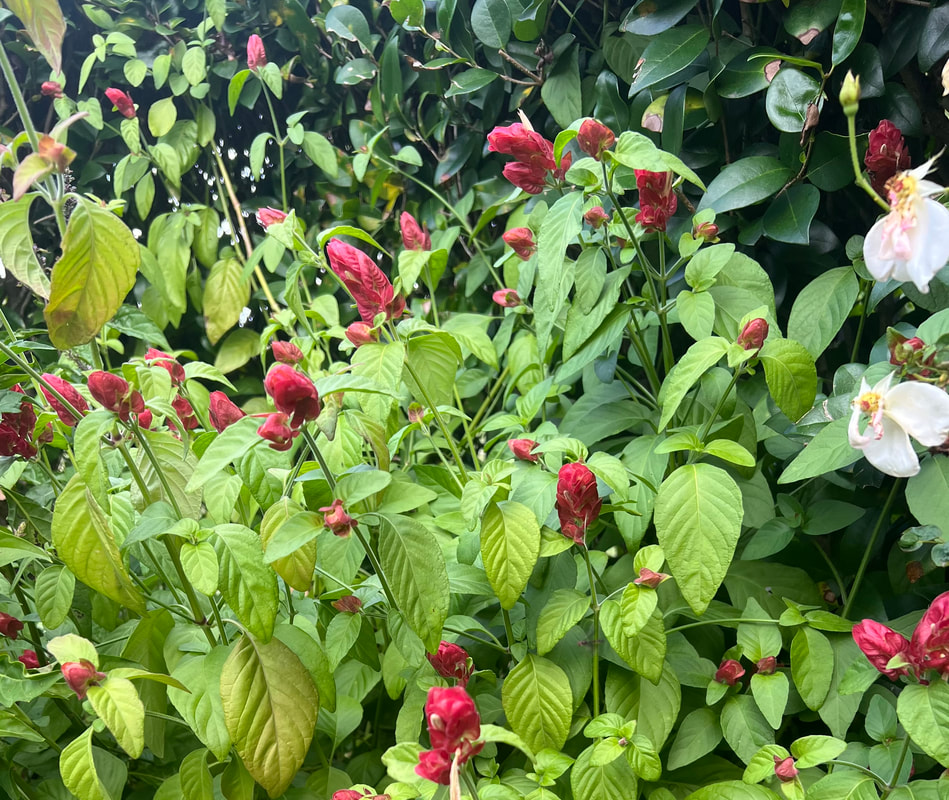
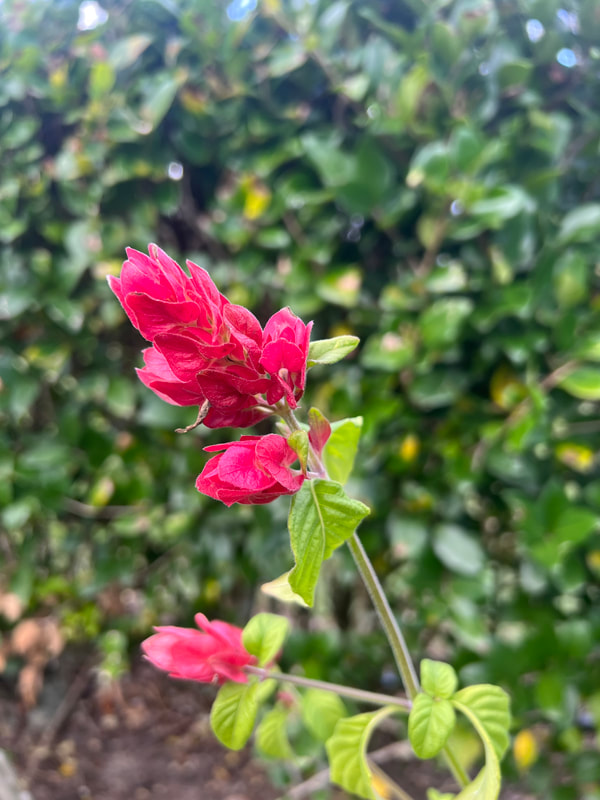
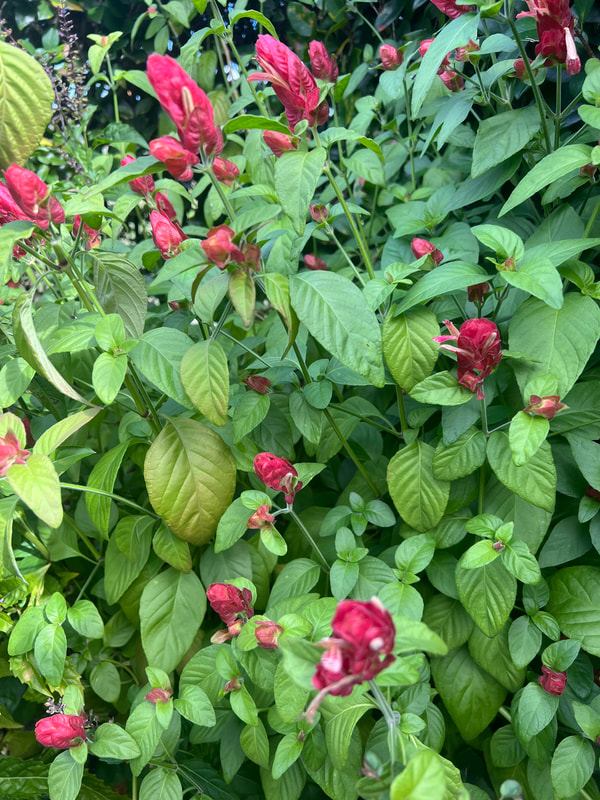
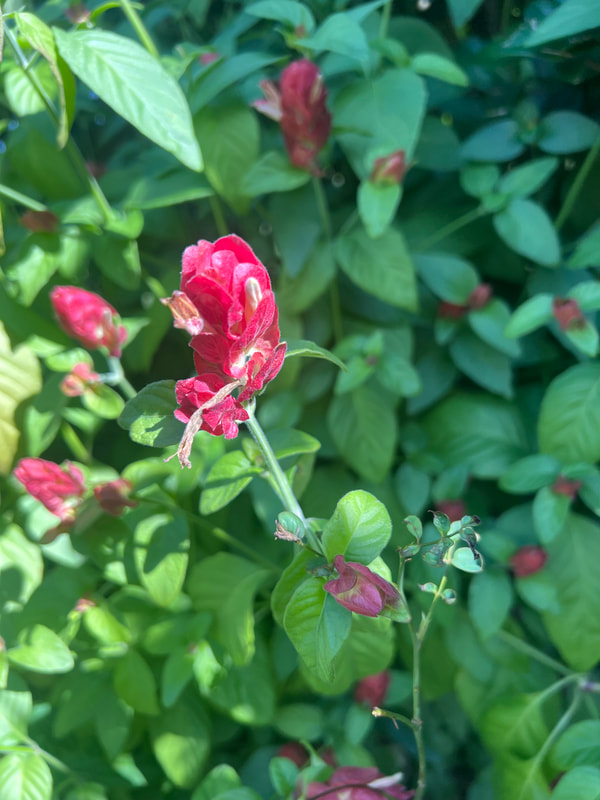
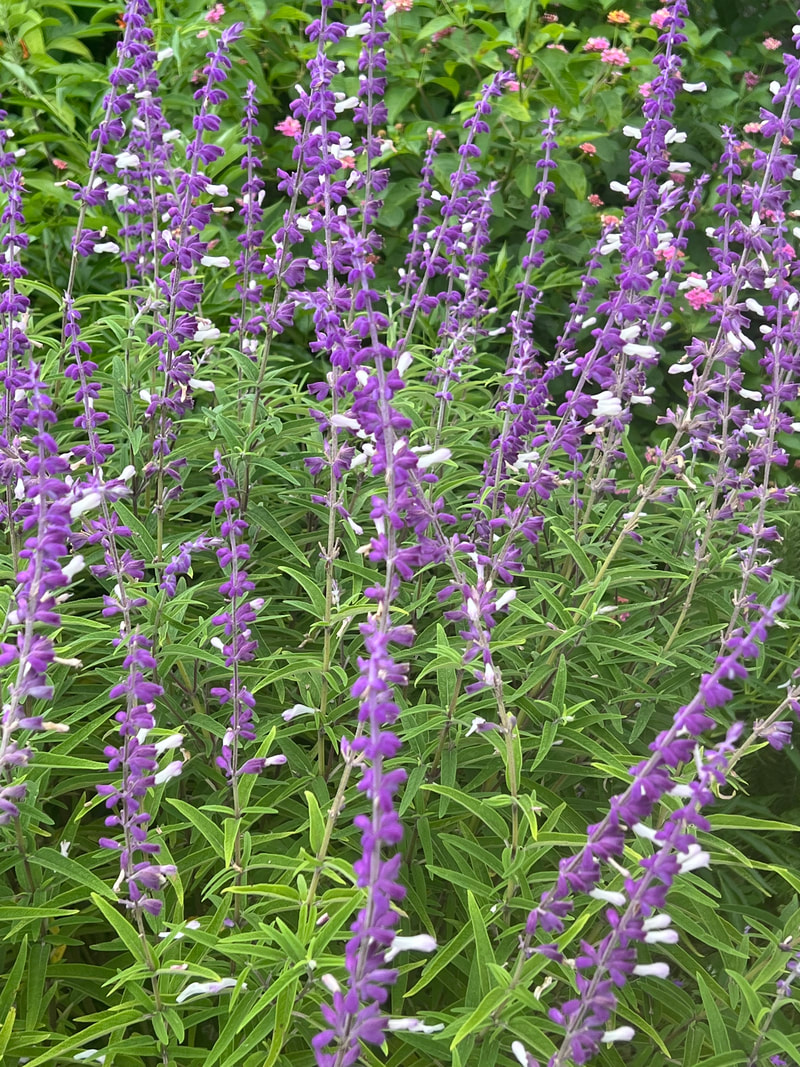
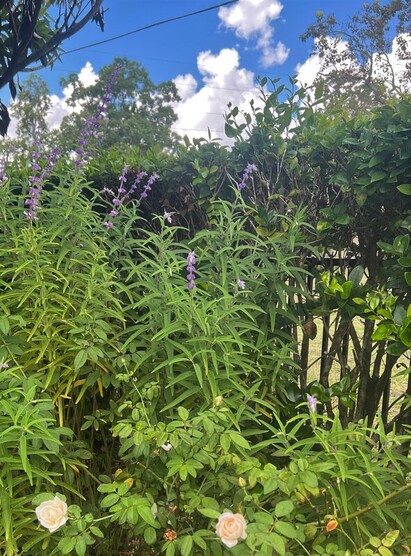
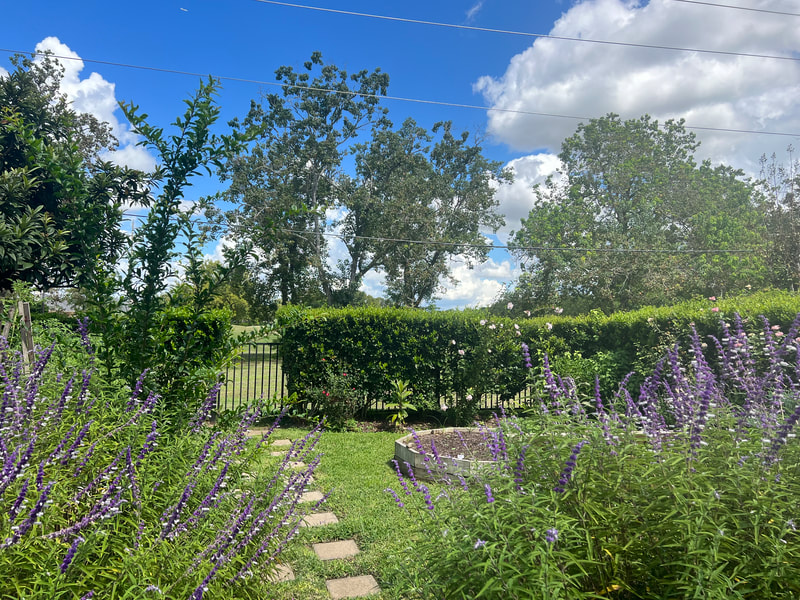
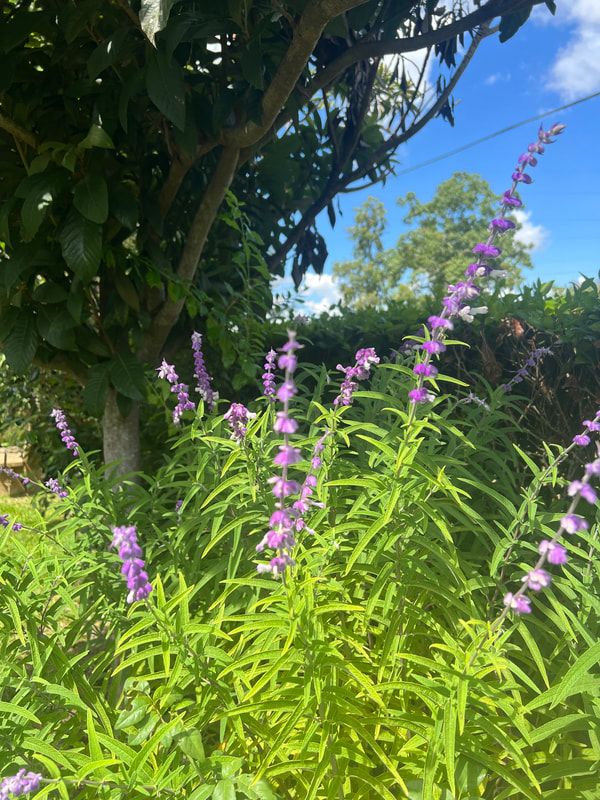
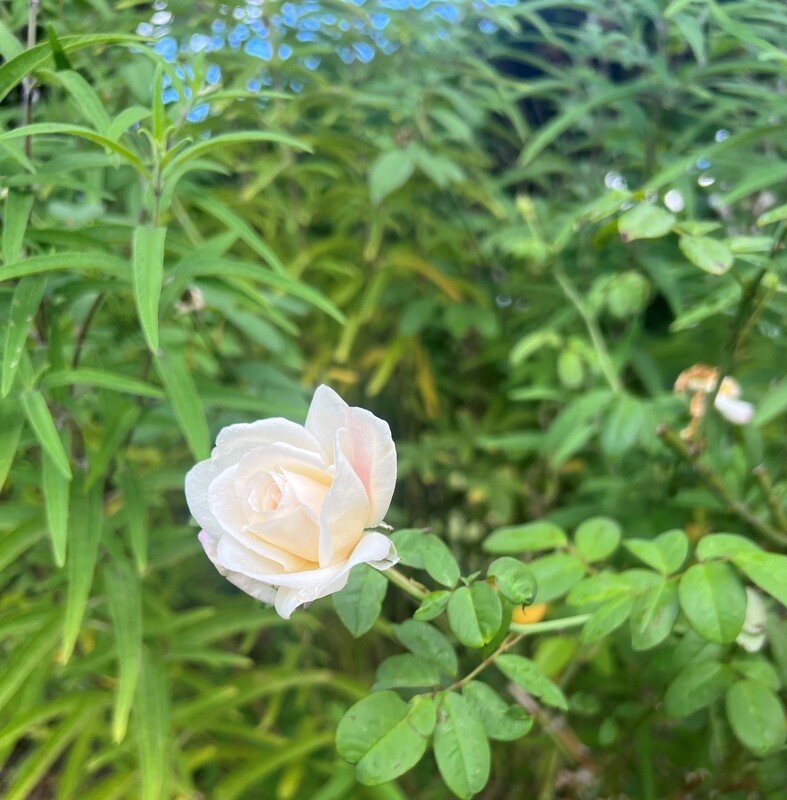
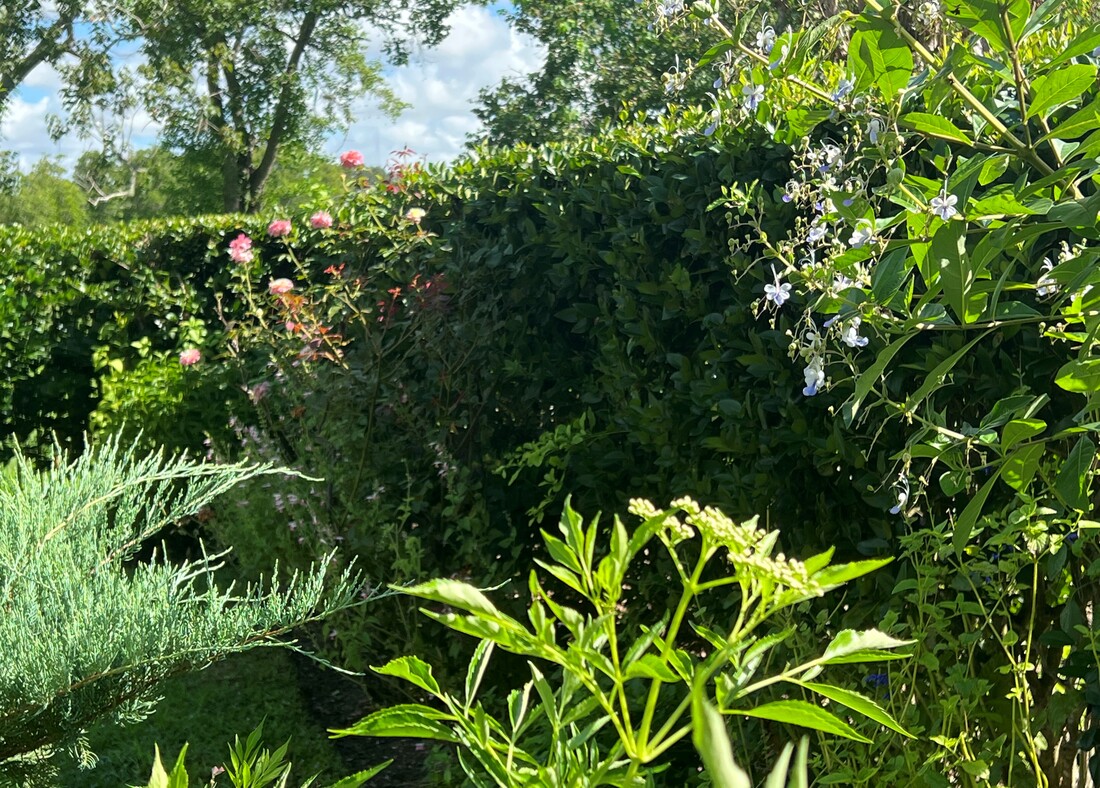
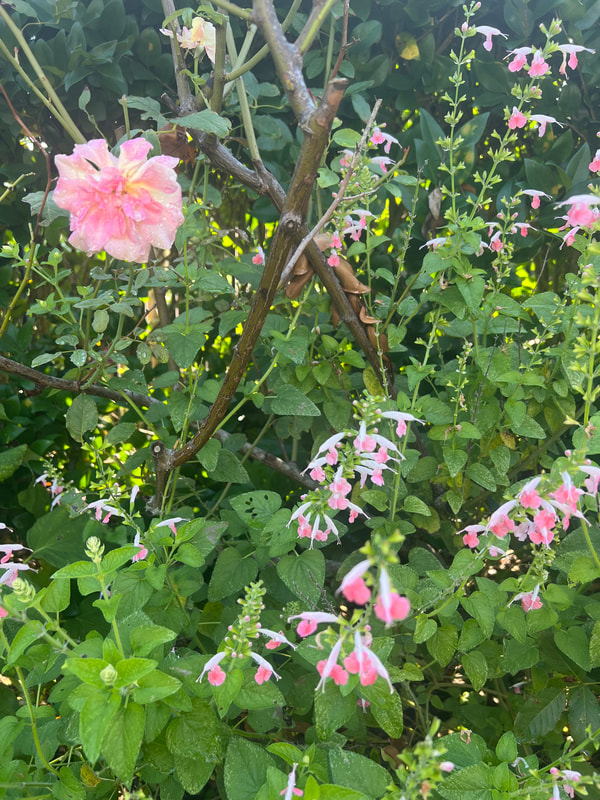

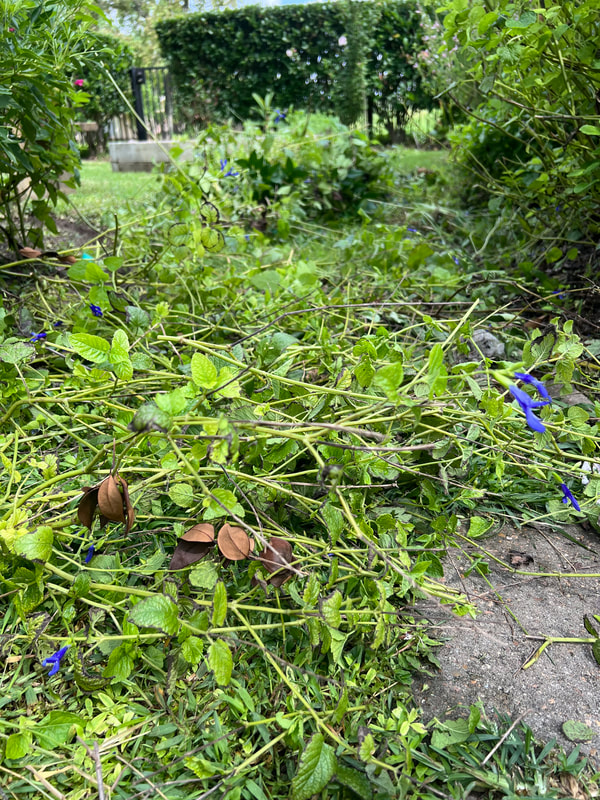
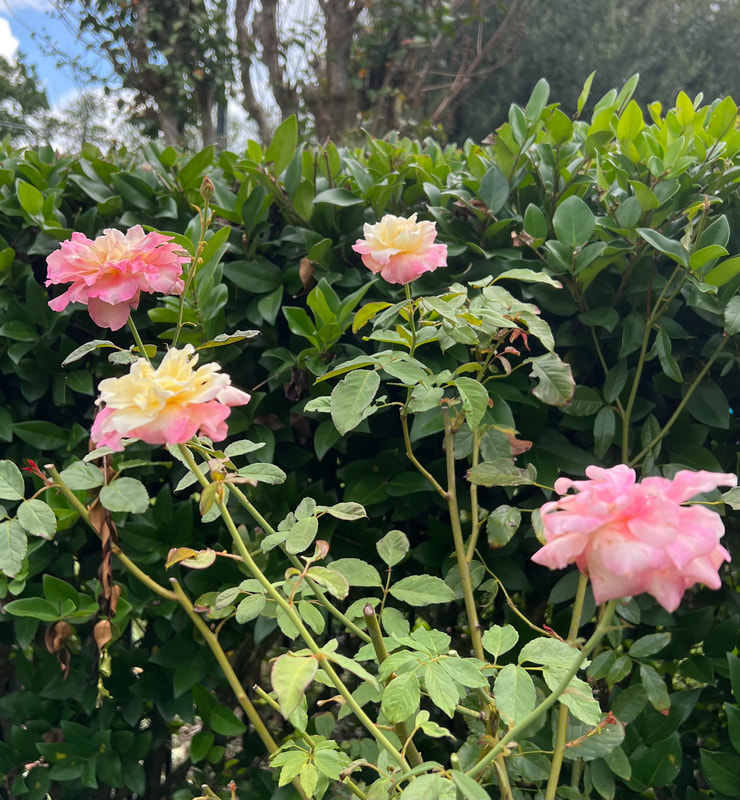
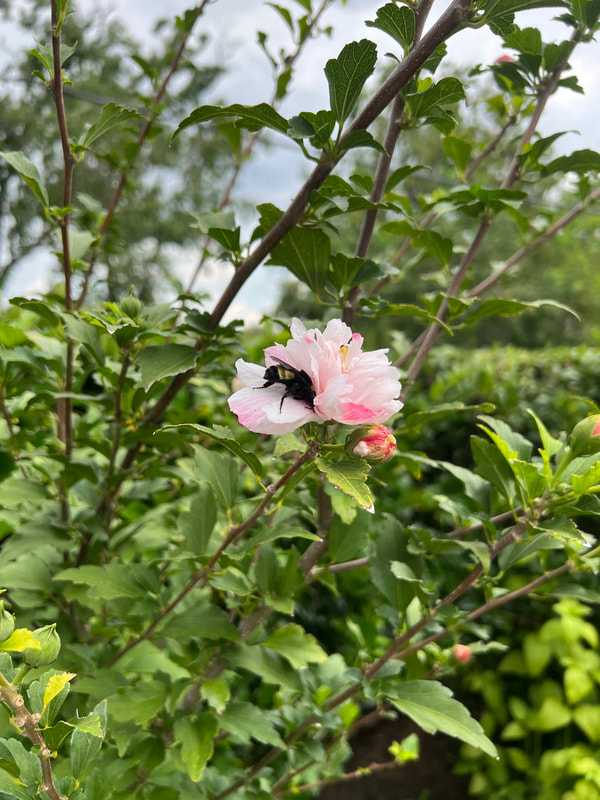
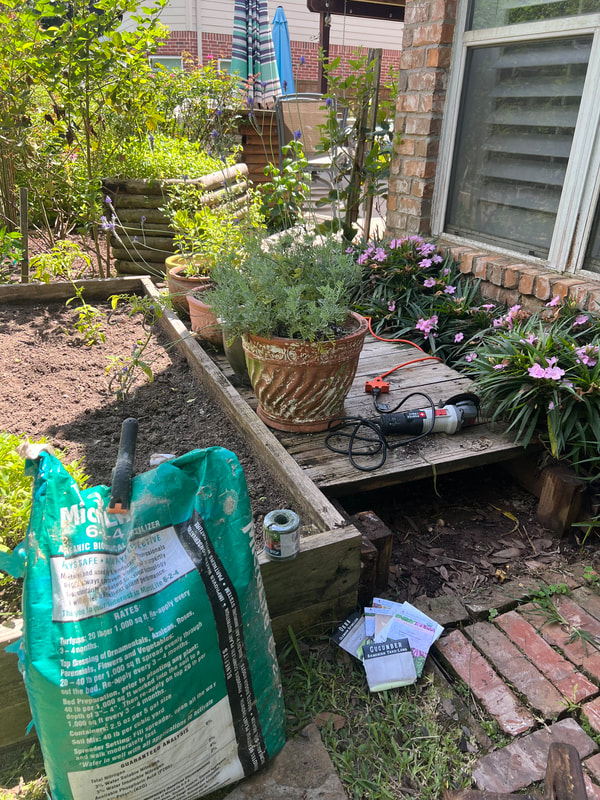
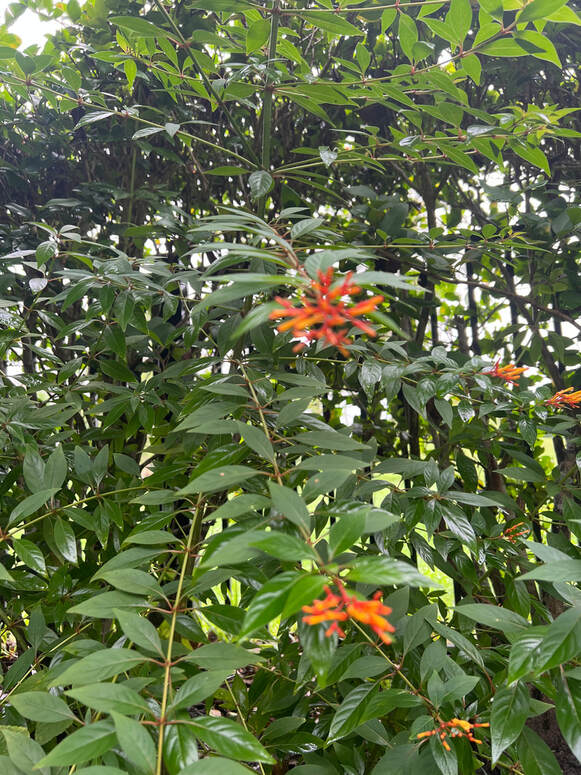
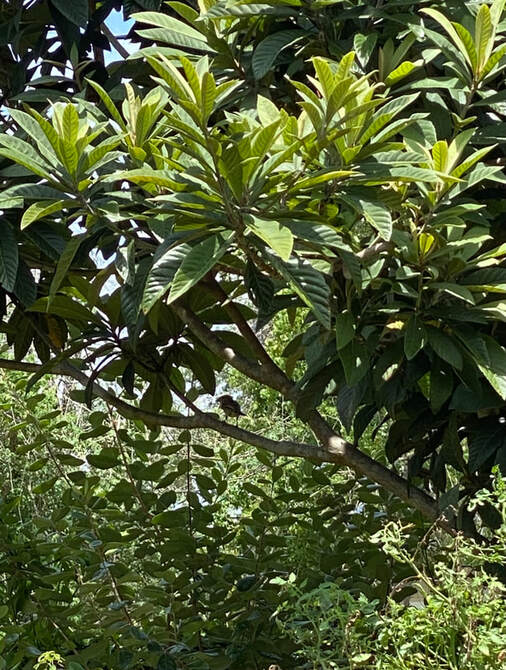
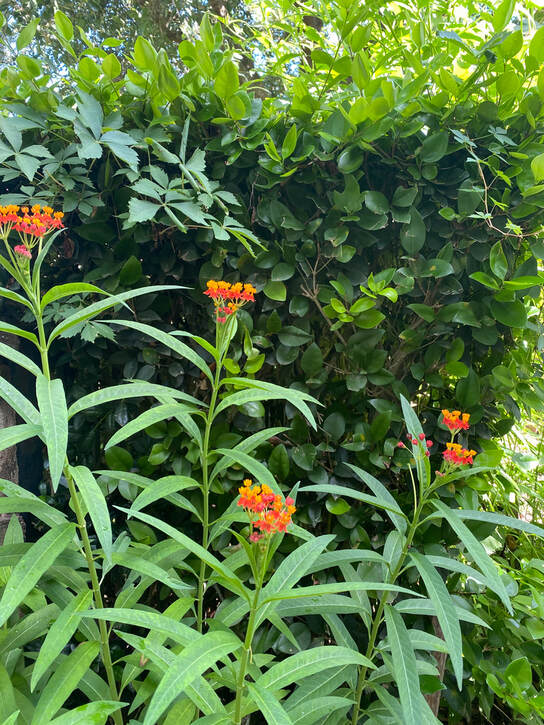
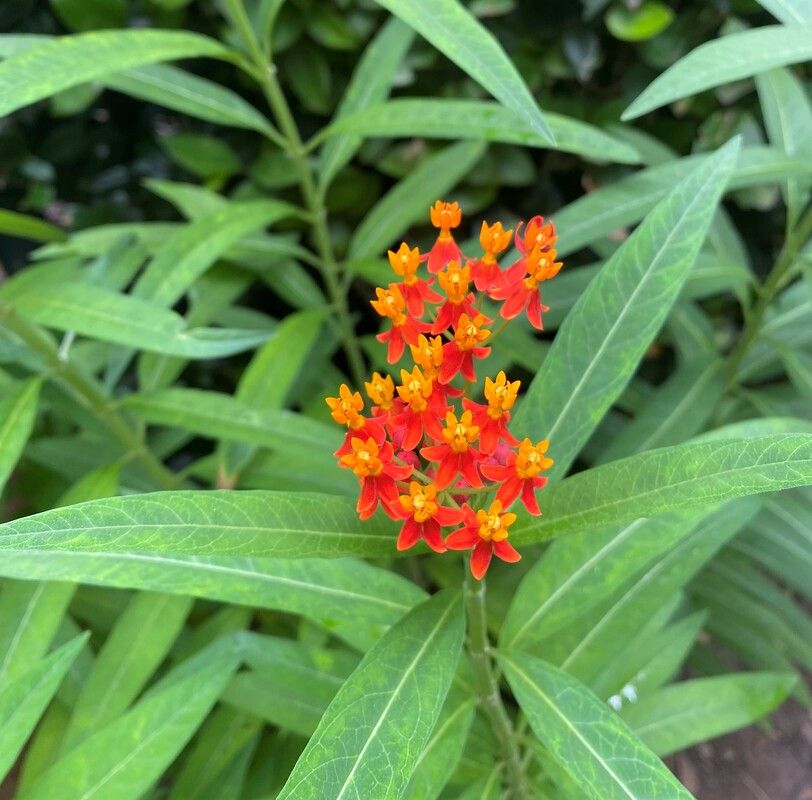
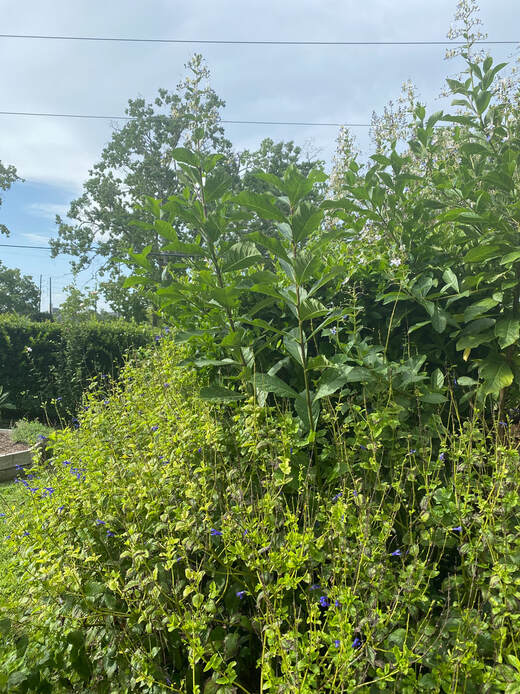
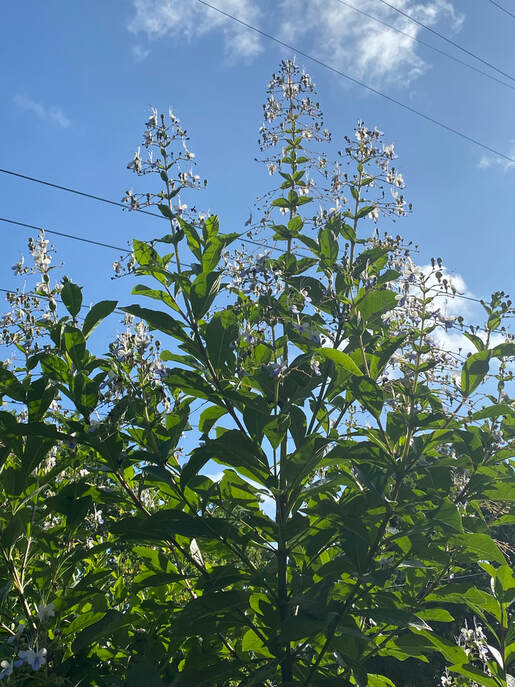
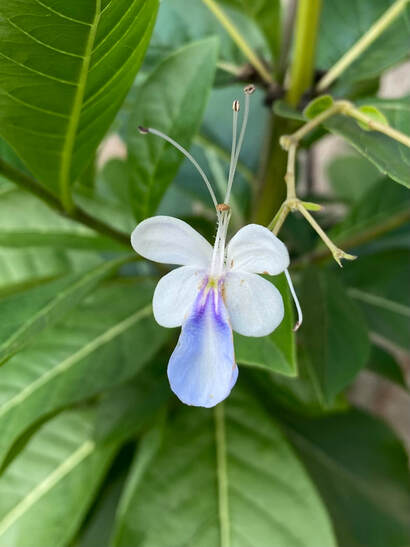
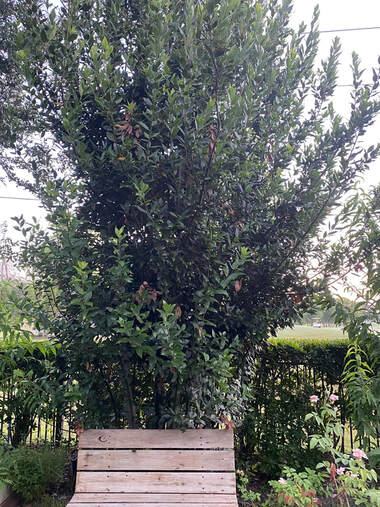
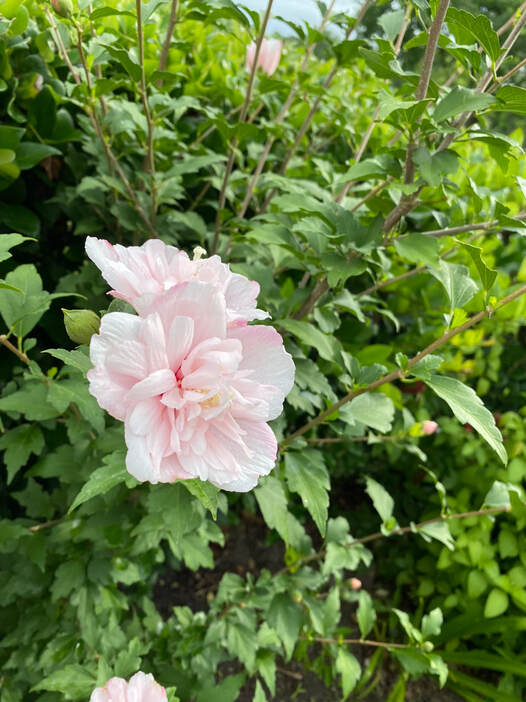

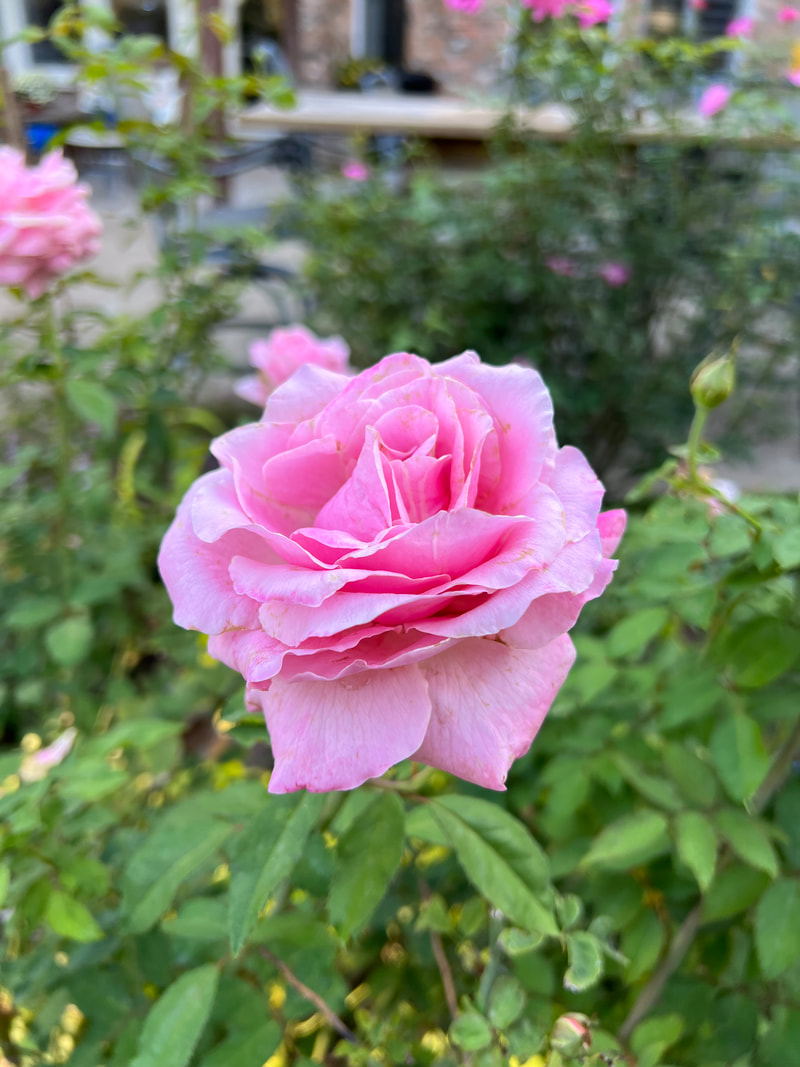
 RSS Feed
RSS Feed